Alberta
Media melts down as Danielle Smith moves to end ‘transitioning’ of children in Alberta
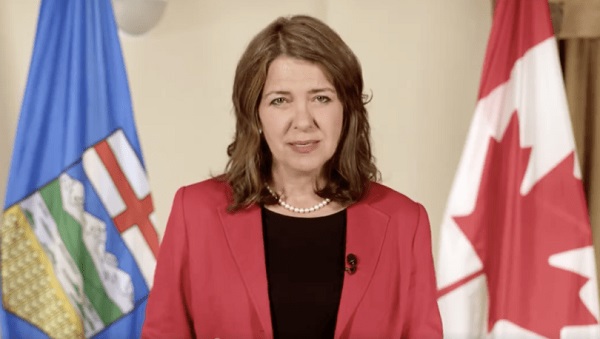
From LifeSiteNews
After Alberta’s Danielle Smith put forth legislation to protect kids from being gender ‘transitioned,’ the Canadian media went on a predictable melt down, citing ‘experts’ who blatantly lie to advance the LGBT agenda.
A year after announcing her intention to combat transgender ideology and protect children, Alberta Premier Danielle Smith has tabled three pieces of UCP (United Conservative Party) government legislation:
- The Education Amendment Act 2024 will require parental consent for “socially transitioning” children under the age of 16 (changing a child’s name or “preferred pronouns”). The bill also gives parents an “opt-in” option for any sexual or content at school. Smith has emphasized that the Alberta Teaching Profession Commission has the power to discipline teachers if they decide to break the law.
- The Health Statues Amendment Act 2024 will ban the use of puberty blockers and cross-sex hormones for minors, as well as prohibit sex change surgeries on minors.
- The Fairness and Safety in Sport Act will ban trans-identifying men from female sports teams.
Together, these three bills represent the most definitive pushback against gender ideology in Canada by any premier. Smith’s decision to announce her intent to pursue such legislation and then wait has turned out to be politically savvy—it has given the UCP government a good look at the LGBT response, and during that time the U.K.’s Labour government has successfully fought to maintain a similar ban in the courts and publicly rebutted many of the scare tactics used by LGBT activists.
Smith and the UCP are thus walking into this debate with eyes wide open, and are clearly certain that the public is on their side (it is) and that the legislation can survive the court challenges surely coming from LGBT activists. The policies are clearly popular with the UCP party’s base, who handed Smith a staggering 91.5% approval rating in her leadership review at UCP gathering in Red Deer last Saturday.
The party also passed 35 policy resolutions, including several that indicate the UCP’s willingness to go further in fighting transgender ideology, with resolutions that would restrict “exclusively female spaces” like bathrooms and changerooms to females and designating transgender surgeries as “elective cosmetic procedures” not funded by the taxpayer. The motions received near-unanimous support.
The Canadian press, unsurprisingly, is working hard to present policies that the vast majority of Canadians support as an attack on fundamental norms (albeit norms that only surfaced in the last few years and were never presented to voters). Global News ran the headline: “Alberta unveils 3 sweeping bills affecting trans and gender-diverse youth.” It is important to note that the press accepts the premises of transgender ideology as the starting point for their reporting, with heavy usage of nonsensical phrases like “gender-diverse youth,” which implies that there are many genders.
In fact, Global News and other Canadian outlets trotted out talking points that have been definitively rebutted by the U.K.’s Cass Review and multiple medical studies—in fact, even the New York Times has been reporting on the permanent harms of puberty blockers over the past several years. An example from Global News:
Alberta parents of gender-diverse youth like Haley Wray believe the new laws will give kids less choice — especially when it comes to health-care that is not permanent but instead, gives kids time to work through their identity struggles.
‘Hormone blockers are a very valuable tool,’ Wray said, explaining they have a very small window of effectiveness to pause, but not prevent, puberty. ‘It is reversible because nothing changes. And what that does is it allows youth and families to have that that pause, that break to explore further, validate, understand what this means and know that permanent changes aren’t happening.’
Wray believes the proposed legislation will make the province a less safe place for tens of thousands of Alberta kids who aren’t straight. It’s why, Wray says, a growing number of families with transgender children are now grappling with whether Alberta is a place they can stay. ‘I know people who have, and I know people who genuinely feel like there is likely nowhere to go,’ she said.
This is incorrect. Puberty blockers cause permanent damage, and children may be rendered permanently sterile after taking them for a relatively short period of time. Puberty is not something that can be “paused,” and it frequently causes irreversible rather than reversible damage. Smith and her government understand this, which is why they have decided to pass this legislation—not, as nearly every press outlet claimed, to “target trans youth,” but to protect them.
The CBC chimed in with sentences like this one:
Terms like ‘biological female’ and ‘biological male’ can be used to imply that transgender people are still their assigned sex at birth, despite their identity.
To translate: a scientifically accurate and precise statement is now an ideological one, but inherently ideological language invented by the transgender movement over the past decade is, in fact, technically accurate. People can identify as anything they want; it is irrelevant to their biology. The CBC presents pointing this out as some sort of propagandistic attack on vulnerable people.
Fortunately, Smith appears to know what she’s doing here. She’s taken her time to ensure that the legislation she has put forward will pass, and that it is defensible in court. Saskatchewan Premier Scott Moe, who has just led the Saskatchewan Party to its fifth straight majority government, is of a similar mind—he’s promised to put forward legislation protecting female spaces as a matter of first priority. It took long enough, but Canada’s conservatives are finally starting to move.
Alberta
Median workers in Alberta could receive 72% more under Alberta Pension Plan compared to Canada Pension Plan
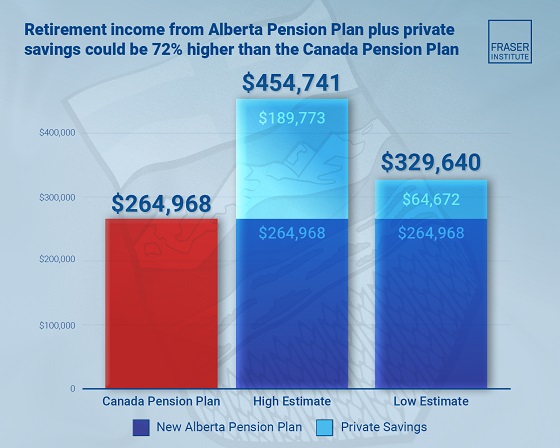
From the Fraser Institute
By Tegan Hill and Joel Emes
Moving from the CPP to a provincial pension plan would generate savings for Albertans in the form of lower contribution rates (which could be used to increase private retirement savings while receiving the same pension benefits as the CPP under the new provincial pension), finds a new study published today by the Fraser Institute, an independent, non-partisan Canadian public policy think-tank.
“Due to Alberta’s comparatively high rates of employment, higher average incomes, and younger population, Albertans would pay a lower contribution rate through a separate provincial pension plan while receiving the same benefits as under the CPP,” said Tegan Hill, director of Alberta policy at the Fraser Institute and co-author of Illustrating the Potential of an Alberta Pension Plan.
Assuming Albertans invested the savings from moving to a provincial pension plan into a private retirement account, and assuming a contribution rate of 5.85 per cent, workers earning the median income in Alberta ($53,061 in 2025) could accrue a stream of retirement payments totalling $454,741 (pre-tax)—a 71.6 per cent increase from their stream of CPP payments ($264,968).
Put differently, under the CPP, a median worker receives a total of $264,968 in retirement income over their life. If an Alberta worker saved the difference between what they pay now into the CPP and what they would pay into a new provincial plan, the income they would receive in retirement increases. If the contribution rate for the new provincial plan was 5.85 per cent—the lower of the available estimates—the increase in retirement income would total $189,773 (or an increase of 71.6 per cent).
If the contribution rate for a new Alberta pension plan was 8.21 per cent—the higher of the available estimates—a median Alberta worker would still receive an additional $64,672 in retirement income over their life, a marked increase of 24.4 per cent compared to the CPP alone.
Put differently, assuming a contribution rate of 8.21 per cent, Albertan workers earning the median income could accrue a stream of retirement payments totaling $329,640 (pre-tax) under a provincial pension plan—a 24.4 per cent increase from their stream of CPP payments.
“While the full costs and benefits of a provincial pension plan must be considered, its clear that Albertans could benefit from higher retirement payments under a provincial pension plan, compared to the CPP,” Hill said.
Illustrating the Potential of an Alberta Pension Plan
- Due to Alberta’s comparatively high rates of employment, higher average incomes, and younger population, Albertans would pay a lower contribution rate with a separate provincial pension plan, compared with the CPP, while receiving the same benefits as under the CPP.
- Put differently, moving from the CPP to a provincial pension plan would generate savings for Albertans, which could be used to increase private retirement income. This essay assesses the potential savings for Albertans of moving to a provincial pension plan. It also estimates an Albertan’s potential increase in total retirement income, if those savings were invested in a private account.
- Depending on the contribution rate used for an Alberta pension plan (APP), ranging from 5.85 to 8.2 percent, an individual earning the CPP’s yearly maximum pensionable earnings ($71,300 in 2025), would accrue a stream of retirement payments under the total APP (APP plus private retirement savings), yielding a total retirement income of between $429,524 and $584,235. This would be 22.9 to 67.1 percent higher, respectively, than their stream of CPP payments ($349,545).
- An individual earning the median income in Alberta ($53,061 in 2025), would accrue a stream of retirement payments under the total APP (APP plus private retirement savings), yielding a total retirement income of between $329,640 and $454,741, which is between 24.4 percent to 71.6 percent higher, respectively, than their stream of CPP payments ($264,968).

Joel Emes
Alberta
Alberta ban on men in women’s sports doesn’t apply to athletes from other provinces

From LifeSiteNews
Alberta’s Fairness and Safety in Sport Act bans transgender males from women’s sports within the province but cannot regulate out-of-province transgender athletes.
Alberta’s ban on gender-confused males competing in women’s sports will not apply to out-of-province athletes.
In an interview posted July 12 by the Canadian Press, Alberta Tourism and Sport Minister Andrew Boitchenko revealed that Alberta does not have the jurisdiction to regulate out-of-province, gender-confused males from competing against female athletes.
“We don’t have authority to regulate athletes from different jurisdictions,” he said in an interview.
Ministry spokeswoman Vanessa Gomez further explained that while Alberta passed legislation to protect women within their province, outside sporting organizations are bound by federal or international guidelines.
As a result, Albertan female athletes will be spared from competing against men during provincial competition but must face male competitors during inter-provincial events.
In December, Alberta passed the Fairness and Safety in Sport Act to prevent biological men who claim to be women from competing in women’s sports. The legislation will take effect on September 1 and will apply to all school boards, universities, as well as provincial sports organizations.
The move comes after studies have repeatedly revealed what almost everyone already knew was true, namely, that males have a considerable advantage over women in athletics.
Indeed, a recent study published in Sports Medicine found that a year of “transgender” hormone drugs results in “very modest changes” in the inherent strength advantages of men.
Additionally, male athletes competing in women’s sports are known to be violent, especially toward female athletes who oppose their dominance in women’s sports.
Last August, Albertan male powerlifter “Anne” Andres was suspended for six months after a slew of death threats and harassments against his female competitors.
In February, Andres ranted about why men should be able to compete in women’s competitions, calling for “the Ontario lifter” who opposes this, apparently referring to powerlifter April Hutchinson, to “die painfully.”
Interestingly, while Andres was suspended for six months for issuing death threats, Hutchinson was suspended for two years after publicly condemning him for stealing victories from women and then mocking his female competitors on social media. Her suspension was later reduced to a year.
-
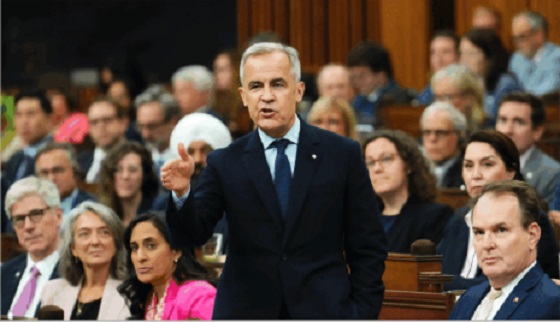
 Business24 hours ago
Business24 hours agoMark Carney’s Fiscal Fantasy Will Bankrupt Canada
-
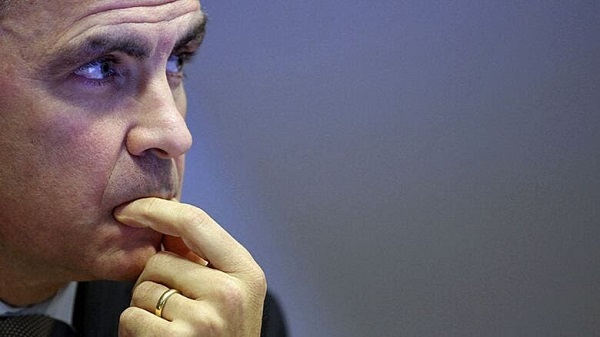
 Business2 days ago
Business2 days agoCarney government should apply lessons from 1990s in spending review
-

 Entertainment2 days ago
Entertainment2 days agoStudy finds 99% of late-night TV guests in 2025 have been liberal
-
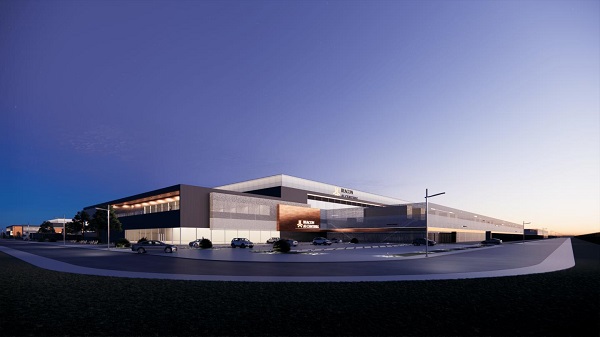
 Alberta23 hours ago
Alberta23 hours agoTemporary Alberta grid limit unlikely to dampen data centre investment, analyst says
-

 Opinion1 day ago
Opinion1 day agoCharity Campaigns vs. Charity Donations
-

 Frontier Centre for Public Policy2 days ago
Frontier Centre for Public Policy2 days agoCanada’s New Border Bill Spies On You, Not The Bad Guys
-

 Daily Caller19 hours ago
Daily Caller19 hours ago‘Strange Confluence Of Variables’: Mike Benz Wants Transparency Task Force To Investigate What Happened in Butler, PA
-

 Uncategorized2 days ago
Uncategorized2 days agoCNN’s Shock Climate Polling Data Reinforces Trump’s Energy Agenda




